In today’s fast-changing digital world, Managed IT Services have become an essential solution for businesses looking to optimize their IT operations and improve overall efficiency. By outsourcing their IT needs to a third-party provider, companies can access a range of services that typically include network monitoring, data backup, cybersecurity measures, and strategic IT planning.
Understanding the return on investment (ROI) from these services is crucial for any business aiming to justify their IT spending. ROI serves as a quantitative measure of the benefits gained in relation to the costs incurred. This metric is important in decision-making processes, helping businesses determine the tangible and intangible value brought by Managed IT Services.
This article explores how Managed IT Services provide significant value to businesses. It will focus on how ROI can be effectively measured across different aspects of this value creation. The goal is to provide readers with insights into using Managed IT Services strategically, ensuring alignment with business objectives and promoting sustainable growth.
Understanding Managed IT Services and Their Benefits
Managed IT Services represent a strategic approach to handling an organization’s IT operations. By outsourcing IT needs to third-party providers, businesses can focus on their core competencies while ensuring that their digital infrastructure is robust, secure, and adaptable.
What Are Managed IT Services?
At its core, Managed IT Services involve entrusting the management of a company’s IT infrastructure to external experts. These services encompass a range of solutions, including:
- Network Monitoring
- Data Backup and Recovery
- Cybersecurity Measures
- Help Desk and End User Support
- Cloud Infrastructure Management
- Software License Management and Compliance
- IT Asset Management and Inventory Tracking
- Hardware Procurement and Lifecycle Management
- Email and Communication Systems Management
- Server Administration and Maintenance
- Mobile Device Management (MDM)
- IT Policy Development and Implementation
- Network Infrastructure Planning and Scaling
- Vendor Management and Coordination
This holistic management approach ensures that the IT environment is not only operational but optimized for efficiency and security.
Benefits of Outsourcing IT Functions
Engaging third-party providers for digital infrastructure management offers several advantages:
- Cost Savings: With predictable monthly expenses, businesses can avoid the fluctuating costs associated with maintaining an in-house IT team. This financial predictability aids in budgeting and financial planning.
- Increased Productivity: By minimizing downtime through proactive monitoring and rapid issue resolution, employees are empowered to maintain high levels of productivity without tech-related interruptions.
- Improved Security: MSPs bring specialized expertise in cybersecurity, offering protection against evolving threats. This reduces the risk of costly breaches and ensures data integrity.
- Scalability: As businesses grow or pivot, managed services provide the flexibility needed to scale resources up or down. This adaptability supports business agility without significant capital investment.
Outsourcing these functions allows organizations to leverage cutting-edge technology and expert knowledge without the overhead costs typically associated with maintaining such capabilities internally. This strategic partnership not only enhances operational efficiency but also positions businesses for sustainable growth in an increasingly digital world.
Measuring ROI from Managed IT Services: Key Performance Indicators (KPIs) to Consider
Establishing clear objectives is crucial when engaging with Managed IT Services. Without defined goals, it becomes challenging to measure the success and return on investment (ROI) of these services. Begin by aligning your business objectives with the capabilities of managed services. This alignment ensures that the partnership supports your strategic aims and delivers tangible benefits.
Identifying Key Performance Indicators (KPIs)
Once goals are established, the next step involves identifying key performance indicators (KPIs) that will serve as benchmarks for evaluating the effectiveness of managed services. These KPIs should reflect the areas where you expect improvements and align with your core business objectives. Here are some critical KPIs to consider:
- Downtime Rates: Minimized downtime is a primary benefit of managed services. KPI tracking in this area can help determine how effectively your provider maintains system uptime, thus ensuring business continuity.
- Recovery Times from Incidents: The speed at which systems recover from disruptions is another vital metric. Shorter recovery times indicate more efficient incident management, minimizing operational impacts.
- Security Breaches: Monitoring the frequency and severity of security breaches helps evaluate the robustness of cybersecurity measures implemented by your service provider.
- Compliance Levels: For industries with strict regulatory requirements, maintaining compliance is non-negotiable. KPIs here might include adherence rates to specific standards or successful audit outcomes facilitated by managed services.
Evaluation Methods
With KPIs identified, implementing robust evaluation methods is crucial for accurate measurement. Regularly reviewing these metrics allows businesses to gauge performance against expectations and adjust strategies as needed. Consider incorporating automated tools for real-time monitoring and reporting, which provide actionable insights quickly and efficiently.
Data visualization techniques such as dashboards can also aid in interpreting complex data, making it easier for stakeholders to understand performance trends and make informed decisions.
Aligning Performance Metrics with Business Goals
A strategic approach involves continuously aligning performance metrics with evolving business goals. As objectives shift due to market changes or internal developments, adjust your KPIs to ensure they remain relevant and continue providing value insights into your managed services’ contribution to ROI.
By focusing on these carefully selected KPIs and employing rigorous evaluation methods, businesses can gain a clear understanding of how Managed IT Services contribute to their bottom line. This approach not only measures immediate financial returns but also underscores long-term strategic benefits.
Real-World Examples: Success Stories of Businesses Who Measured ROI from Managed IT Services
Successful Utilization of Managed IT Services
Businesses across various industries have used Managed IT Services to make their operations smoother, improve security, and ultimately, increase their return on investment (ROI). These success stories show how effective IT management can bring about significant benefits.
Example 1: Engineering Firm
A mid-sized engineering firm struggled with data management and collaboration across multiple project teams. After implementing managed IT services, they established a centralized cloud-based platform for project documentation, implemented BIM software support, and enhanced remote access capabilities. This resulted in a 40% reduction in project delays, 30% improvement in team collaboration efficiency, and secure handling of sensitive client data.
Example 2: Accounting Firm
A regional accounting firm faced challenges with system security and compliance during tax season. Their managed IT service provider implemented advanced cybersecurity measures, automated backup systems, and provided 24/7 technical support. The result was zero security breaches, 99.9% system uptime during peak season, and a 25% reduction in IT-related operational costs.
Example 3: Family Practice Doctor's Office
A family practice with three physicians needed to modernize their patient management system and ensure HIPAA compliance. The managed IT service provider implemented a secure electronic health records (EHR) system, established reliable backup protocols, and provided staff training. This led to a 50% reduction in patient wait times, 100% HIPAA compliance, and a 35% increase in patient satisfaction scores.
Example 4: Construction Company
A regional infrastructure construction company struggled with project management coordination and real-time data sharing across multiple job sites. Their managed IT service provider implemented a cloud-based project management system, mobile device management for field workers, and secure data sharing protocols. This resulted in a 40% improvement in project completion times, 60% reduction in communication delays, and a 30% decrease in documentation errors. The company also achieved better equipment tracking and maintenance scheduling, leading to a 25% reduction in equipment downtime.
reduction in equipment downtime. Metrics for Assessing ROI
The above examples highlight key metrics used by businesses to evaluate their ROI from Managed IT Services:
- Cost Savings: Measured through reductions in downtime or decreased need for in-house IT staff.
- Improved Security Posture: Quantified by fewer security breaches or compliance violations.
- Enhanced Productivity: Reflected in reduced system outages leading to uninterrupted workflows.
Lessons Learned from Case Studies
From these real-world examples, several lessons emerge that businesses can apply when considering Managed IT Services:
- Tailored Solutions Matter: Customizing managed services to fit specific business needs ensures that the solutions provided directly address operational challenges.
- Regular Evaluation is Key: Continuous assessment of performance metrics helps in identifying areas for improvement and adjusting strategies accordingly.
- Partnership Approach: Viewing the MSP relationship as a partnership rather than just a vendor-client interaction fosters collaboration and aligns goals for optimal results.
These insights highlight the potential of Managed IT Services to deliver measurable outcomes that enhance business value. By focusing on key performance indicators, businesses can unlock significant returns on their investment in technology management solutions.
Long-Term Benefits Beyond Immediate ROI: Why Investing in Managed IT Services Is a Strategic Move for Businesses
Investing in Managed IT Services offers enterprises more than just short-term financial returns. The strategic advantages extend far beyond immediate ROI, paving the way for sustained growth and competitive positioning.
Competitive Advantage through Technology Access
Managed Service Providers (MSPs) offer access to advanced technologies and specialized expertise that many businesses might find challenging to maintain in-house. This access is crucial for staying ahead of the competition. By leveraging cutting-edge solutions and expert advice, businesses can:
- Implement the latest cybersecurity measures to protect against emerging threats.
- Utilize sophisticated data analytics tools to gain insights and drive decision-making.
- Optimize IT systems for efficiency, thereby enhancing overall operational effectiveness.
The ability to quickly adapt to technological advancements provides a significant competitive edge, enabling companies to meet market demands efficiently and effectively.
Strategic Planning with a Reliable Partner
A partnership with an MSP facilitates strategic planning by ensuring that your IT infrastructure aligns with your long-term business objectives. MSPs help in:
- Anticipating future needs: By understanding industry trends and technological shifts, MSPs can proactively suggest improvements or upgrades.
- Resource allocation: Expert guidance on allocating resources efficiently helps businesses optimize their IT expenditures.
- Risk management: Proactive identification and mitigation of potential risks ensure business continuity.
Through strategic collaboration, businesses can focus on core competencies while relying on MSPs to manage complex IT challenges, fostering an environment conducive to sustainable growth.
Enhancing Value Delivery through Long-Term Relationships
Building and nurturing long-term relationships with MSPs enhances value delivery across various dimensions:
- Consistent service quality: Over time, a strong partnership ensures consistent adherence to Service Level Agreements (SLAs), thereby maintaining high performance standards.
- Deep understanding of business goals: Long-standing relationships enable MSPs to tailor services that align closely with evolving business objectives.
- Collaborative innovation: Continuous engagement fosters innovation, allowing businesses and MSPs to co-create solutions that address specific challenges.
The synergy developed over time transforms the client-provider dynamic into a collaborative alliance, driving efficiency, innovation, and resilience across the organization.
Investing in Managed IT Services isn’t merely about realizing immediate cost savings; it’s about forging partnerships that empower businesses to thrive amidst change and uncertainty. The foresight provided by these strategic alliances positions companies not only for present success but also for future opportunities.
Overcoming Challenges in Measuring ROI for Managed IT Services: Tips for Accurate Assessment
Quantifying the return on investment (ROI) for Managed IT Services can be complex, particularly when dealing with intangible benefits. Businesses often grapple with accurately capturing the value of improved employee morale and enhanced customer experience—two critical factors driven by reliable IT support.
Addressing Intangible Benefits
Managed IT Services contribute to an enhanced work environment by ensuring seamless operations, which can significantly uplift employee morale. High morale often translates into increased productivity and lower turnover rates. However, quantifying these indirect benefits poses a significant challenge:
Employee Morale
- A positive workplace environment reduces stress and promotes efficiency.
- Satisfied employees are less likely to leave, reducing recruitment costs.
Customer Experience
- Reliable IT systems ensure better service delivery.
- Enhanced customer satisfaction can lead to increased loyalty and repeat business.
To tackle this, businesses might consider utilizing surveys or feedback tools to quantify these improvements indirectly. For instance, employee satisfaction surveys can provide insights into how IT support influences workplace happiness.
Common Data Collection Challenges
Accurate data collection is vital for a precise measurement of ROI. However, businesses often encounter several obstacles:
Inconsistent Data Recording
- Discrepancies in data entry across different departments hinder accurate analysis.
- Standardizing data recording processes ensures consistency.
Lack of Integrated Systems
- Diverse IT systems may not communicate effectively, leading to fragmented data.
- Investing in integrated solutions facilitates seamless data sharing.
Data Overload
- The sheer volume of data can be overwhelming.
- Identifying key metrics that align closely with business goals helps in focusing efforts on relevant data points.
Tips for Accurate ROI Assessment
Here are strategies to address these challenges and enhance the accuracy of ROI assessments:
- Establish Clear Objectives: Define specific goals that Managed IT Services aim to achieve. This provides a benchmark against which success can be measured.
- Leverage Technology for Data Collection: Use advanced analytics and data collection tools that integrate seamlessly across platforms, ensuring comprehensive data capture.
- Regularly Review Performance Metrics: Regular assessments help in adjusting strategies to align with evolving business objectives and market conditions.
- Adopt a Holistic Approach: Consider both tangible and intangible benefits when evaluating ROI. This broader perspective ensures a more comprehensive understanding of the value delivered by Managed IT Services.
This proactive approach allows businesses to not only measure but also maximize the value derived from Managed IT Services, ensuring alignment with long-term strategic goals.
The Future of Managed IT Services: Trends Shaping the Industry and Their Potential Impact on Business Value Creation
The world of Managed IT Services is always changing, influenced by new technologies and evolving business needs. Up-and-coming trends have the potential to completely change how businesses get value from these services, making them crucial for strategic growth.
1. Artificial Intelligence (AI) Integration
AI’s integration into Managed IT Services presents a transformative opportunity. Automation and Predictive Analytics powered by AI can enhance service delivery through:
- Predictive Maintenance: Identifying potential system failures before they occur, minimizing downtime.
- Automated Threat Detection: Enhancing cybersecurity efforts by identifying and mitigating threats in real-time.
These capabilities can significantly amplify ROI by reducing operational disruptions and fortifying security measures against increasingly sophisticated cyber threats.
2. Enhanced Cybersecurity Focus
With cyber threats escalating, Managed Service Providers (MSPs) are prioritizing cybersecurity solutions. This trend includes:
- Advanced Threat Monitoring: Utilizing AI and machine learning for proactive threat detection.
- Comprehensive Compliance Solutions: Ensuring businesses meet stringent regulatory requirements with minimal effort.
Investing in such robust security frameworks not only protects sensitive data but also instills confidence among stakeholders, adding to the overall business value.
3. Cloud-Based Solutions Expansion
The shift towards cloud-based services is reshaping IT management paradigms. Businesses gain:
- Scalability and Flexibility: Easily adjusting resources based on demand without heavy capital investments.
- Global Collaboration Tools: Supporting remote workforces with seamless access to data and applications worldwide.
Cloud solutions foster agility, allowing businesses to quickly adapt to market changes, which is crucial for maintaining competitiveness in fast-paced industries.
These trends highlight the increasing strategic importance of Managed IT Services. By taking advantage of these advancements, businesses can unlock new levels of efficiency, security, and innovation, securing a compelling return on investment while paving the way for sustainable growth.






